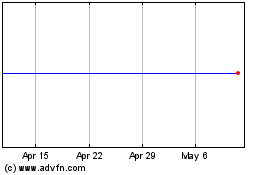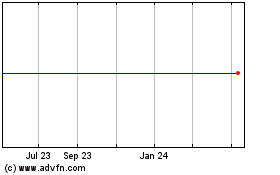2nd UPDATE: BP Tries Again To Siphon Crude From Gulf Leak
May 15 2010 - 6:22PM
Dow Jones News
BP PLC (BP) said Saturday its latest effort to contain a massive
oil spill in the Gulf of Mexico by siphoning crude from the
deepwater well faced an initial setback, but could be operational
overnight.
The U.K. oil giant is trying to reduce the amount of oil spewing
into the Gulf by threading a tube into broken piping coming from
the well. The tube would carry oil to a tanker at the surface,
stemming at least 5,000 barrels of oil leaking into the Gulf a
day.
During a press briefing, BP Chief Operating Officer Doug Suttles
said an initial attempt to put the tube in place a mile beneath the
surface was unsuccessful, with crews pulling the equipment back to
the surface. The company is making a second attempt Saturday. BP
had planned to begin siphoning oil by now, but warned the process
is challenging at such depths.
"It reflects the reality they are working in," Suttles said.
Engineers for more than three weeks have been trying to contain
the leak caused by the April 20 explosion and sinking, two days
later, of Transocean Ltd.'s (RIG) Deepwater Horizon drilling rig,
which was finishing a well for BP. Eleven members of the crew were
killed by the blast, and the spill threatens shores of several Gulf
Coast states.
BP turned to the siphon plan after a containment dome lowered
over the well failed a week ago. The company has a smaller
containment dome known as the "top hat" on the ocean floor as a
backup to its current effort.
Interior Secretary Ken Salazar said a group of top scientists
led by Energy Secretary Steven Chu plan to meet Sunday to continue
working to stop the deepwater leak.
"We feel the pain. We are frustrated," Salazar said during the
press briefing.
Engineers are working on a system to stop the flow of oil, which
is expected to be ready by the end of next week. These options
include a "junk shot," whereby a variety of materials including
tire pieces, knots of rope and other items would be sent down to
clog the leak. The company is drilling a relief well that is seen
as the ultimate solution to stop the spill, but that is scheduled
to take months.
Also on Saturday, Homeland Security Secretary Janet Napolitano
and Salazar released a letter to BP Chief Executive Tony Hayward
asking him for a clear understanding of the company's commitment to
pay for damages from the spill. The U.S. secretaries wrote that
their understanding is the company will not rely on a federal
liability cap or seek reimbursement from the U.S. government or an
oil spill liability trust fund.
A BP spokesman said in an e-mail that the company "will respond
directly" to the authors of the letter.
Rough waters and stormy weather hampered offshore cleanup
efforts on Saturday. Crews were unable to sweep offshore waters or
execute controlled burns. They did use chemical dispersants in deep
waters to break the oil into smaller droplets, allowing microbes in
the water to break it up. The chemicals in the past were only used
on the water's surface, but the Coast Guard said Friday the
Environmental Protection Agency had approved underwater use.
At the news conference, BP's Suttles said the dispersants
appeared to be working. A fly-over Saturday indicated the amount of
oil on the water's surface near the well had "diminished," he told
reporters.
Environmental groups are worried dispersants in deep water might
harm sea life, but Coast Guard Rear Admiral Mary Landry played down
those concerns Saturday. "This is not done by willy-nilly," she
told reporters, referring to the government's decision to give the
green light.
Suttles said less dispersant needs to be used under the surface
of the water to clean up the spill than if it is applied on the
surface.
Landry played down concerns that the well is leaking far more
oil than the roughly 5,000 barrels a day that authorities have been
estimating until now. "We have a very good handle on the oil we're
dealing with," she told reporters.
Tar balls, seen as a possible leading edge of the spill,
increasingly have washed ashore in Louisiana, Mississippi and
Alabama in recent days. But Landry said they still weren't common.
"It's a few places," she said.
The Coast Guard has reported oil sheen at the Chandeleur Islands
off Louisiana. The spill is hitting the offshore fishing industry
and keeping tourists away from the area.
-By Mark Peters and Mike Esterl
Cooper Cameron (NYSE:CAM)
Historical Stock Chart
From Jun 2024 to Jul 2024

Cooper Cameron (NYSE:CAM)
Historical Stock Chart
From Jul 2023 to Jul 2024
